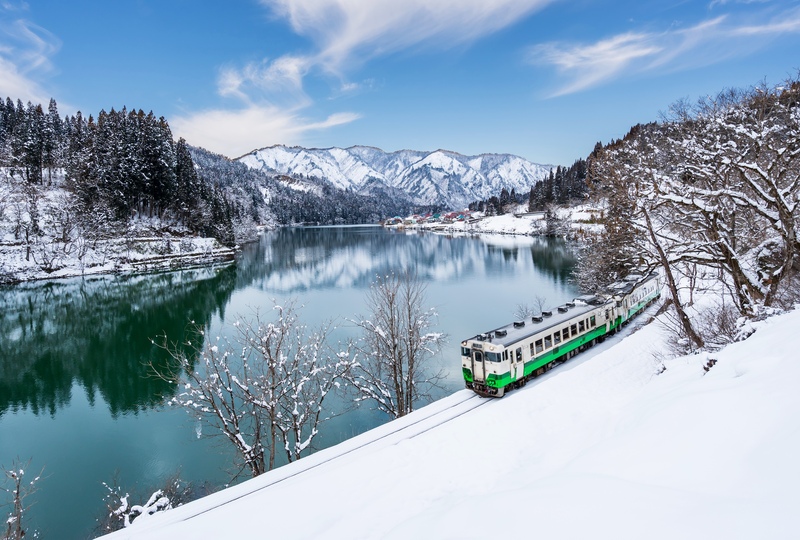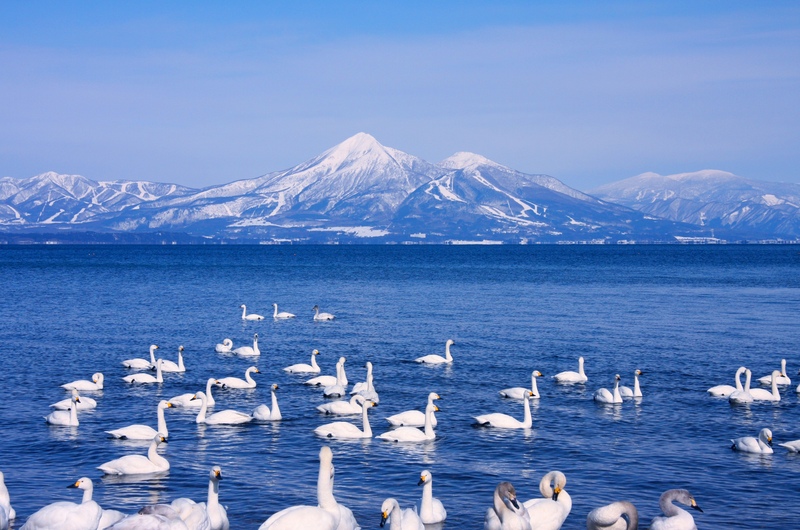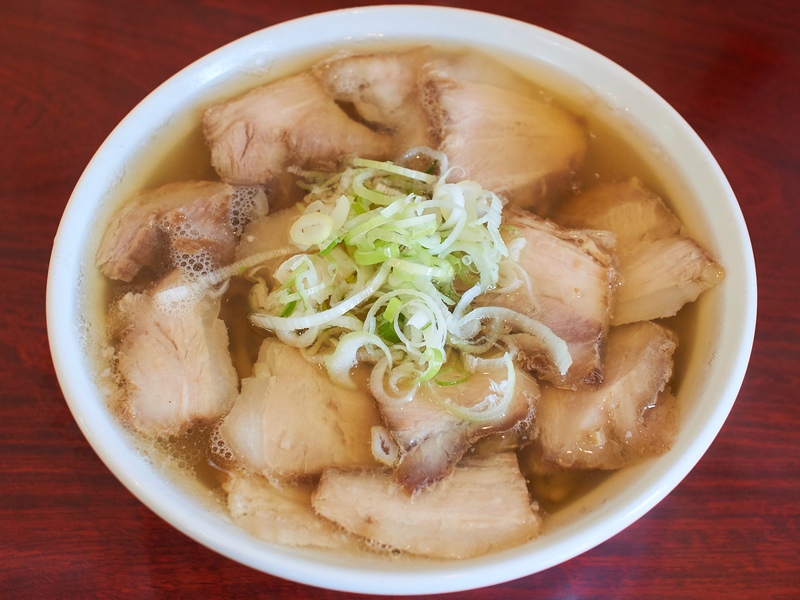What is To-no-Hetsuri? Experience the Spectacular Views and History Created by Fukushima's Nature
Located in the Minamiaizu region of Fukushima Prefecture, "To-no-Hetsuri" is a breathtaking gorge formed by natural erosion.
"Hetsuri" is an Aizu dialect word meaning "cliff" or "precipice," indicating that the landscape has been carved by years of wind, rain, and river flow.
To-no-Hetsuri features an array of peculiar rock formations, spreading out a beautiful landscape akin to a Japanese painting.
This time, we will provide detailed information for international travelers, including highlights, history, seasonal attractions, and access information for To-no-Hetsuri.

1. The Formation and Historical Background of To-no-Hetsuri
The Natural Terrain and Erosion History of To-no-Hetsuri
To-no-Hetsuri is a cliff carved by the flow of the Agagawa River over approximately one million years.
The erosion has created magnificent shapes in the rock walls of To-no-Hetsuri, captivating many visitors.
The complex shapes of the rocks and the ability to closely observe the beauty of nature's formations are the greatest characteristics of To-no-Hetsuri.
The Name and Meaning of To-no-Hetsuri
The word "Hetsuri" refers to "cliff" or "precipice" in the Aizu dialect, and the sheer rock faces overlapping each other resemble towers, hence the name "To-no-Hetsuri."
In the early Showa period, it was designated as a national natural monument, and its grandeur and beauty are appreciated both domestically and internationally.

2. Highlights of To-no-Hetsuri
Peculiar Rock Formations and Natural Beauty
To-no-Hetsuri is characterized by the presence of various large and small rocks formed through natural erosion.
Especially impressive is the "tower-shaped rock" that stands tall like a tower, leaving many tourists in awe of its mystical scenery.
Each of these peculiar rocks has a different shape, allowing visitors to enjoy the beauty of nature's creations up close.
Suspension Bridge and Viewing Spots
To-no-Hetsuri features a tourist suspension bridge, allowing visitors to closely observe the sheer rock faces.
The thrilling view of the Agagawa River's clear stream and the majestic cliffs from the suspension bridge is breathtaking.
A viewpoint awaits on the other side of the suspension bridge, offering a panoramic view of the surrounding mountains and To-no-Hetsuri, making it a popular spot.
Hetsuri's Fudo Hall
Across the suspension bridge lies "Hetsuri's Fudo Hall," a place cherished as a site of worship by visitors.
Fudo Myo-o is enshrined here, and it has long been a place where people pray for safety.
The view of To-no-Hetsuri from Fudo Hall is exceptional, allowing one to feel a blend of faith and nature.

3. Recommended Seasons to Enjoy To-no-Hetsuri
Spring: The Beauty of Fresh Greenery
In spring, To-no-Hetsuri is surrounded by the fresh green of the surrounding mountains, allowing visitors to enjoy the gorge amidst vivid greenery.
The gentle spring breeze and soft sunlight make it an ideal season for hiking.
The contrast between the fresh green and the blue sky further accentuates the peculiar rocks of To-no-Hetsuri.
Summer: The Perfect Season to Feel Coolness
In summer, the clear stream of the Agagawa River cools the surrounding temperature, allowing visitors to enjoy To-no-Hetsuri in a refreshing environment.
The dense green of the trees and the sounds of nature under the blue sky attract many tourists.
A stroll by the river while feeling the coolness is a particular charm of To-no-Hetsuri in summer.
Autumn: Beautiful Contrast of Fall Foliage and Rock Faces
In autumn, the trees surrounding To-no-Hetsuri turn vibrant colors.
The landscape of red and yellow leaves intertwined with the peculiar rocks is truly breathtaking, captivating visitors.
Mid-October to early November is the best time to view the fall foliage, attracting many photography enthusiasts.
Winter: The Enchanting Snow-Covered To-no-Hetsuri
In winter, snow covers the peculiar rocks of To-no-Hetsuri.
The snowy landscape of To-no-Hetsuri is mystical, spreading a serene winter scene.
Although care must be taken with access due to snow, the winter beauty is also exceptional.

4. Access and Basic Information for To-no-Hetsuri
Access Methods
- Train and Bus: From Tokyo, take the Shinkansen to Koriyama Station, transfer to the Aizu Railway to Aizu-Tajima Station, and continue to To-no-Hetsuri Station. It is about a 10-minute walk from To-no-Hetsuri Station.
- Car: Use the Tohoku Expressway, proceed from the Shirakawa Interchange towards Aizuwakamatsu. Parking is available, making access by car convenient.
Operating Information
To-no-Hetsuri is open year-round, allowing visits in all seasons.
However, the suspension bridge may be closed in winter, so it is advisable to check the latest information before visiting.
Admission Fees
To-no-Hetsuri can be visited for free, but parking fees may apply, so checking in advance is recommended for peace of mind.
5. Useful Information for Travelers
To-no-Hetsuri Sightseeing Model Course
The usual course takes about an hour to tour To-no-Hetsuri.
It is recommended to start by crossing the suspension bridge, enjoy the view at Fudo Hall, and relish the scenery from the viewpoint.
After that, take a leisurely walk along the Agagawa Riverbank, fully enjoying the surrounding nature.
Local Specialties and Souvenirs
Around To-no-Hetsuri, local specialties and Fukushima's unique souvenirs can be purchased.
Traditional crafts such as Aizu lacquerware and Akabeko are particularly popular.
Be sure to also try local dishes made with regional ingredients.
Conclusion
To-no-Hetsuri is a tourist spot where you can feel the grandeur of nature and history.
With seasonal landscapes, suspension bridges, and viewing spots, new attractions can be discovered with each visit.
When visiting Fukushima Prefecture, be sure to experience the beauty and mystery of Japan's nature at To-no-Hetsuri.
Frequently Asked Questions (FAQ)
Q1: How long does it take to explore To-no-Hetsuri?
A: It generally takes about an hour to tour To-no-Hetsuri. Enjoy the suspension bridge, viewpoint, and Fudo Hall at a leisurely pace.
Q2: Can To-no-Hetsuri be visited year-round?
A: Yes, it can be visited year-round. However, the suspension bridge may be closed in winter, so it is recommended to confirm beforehand.
Q3: Are there any recommended tourist spots around To-no-Hetsuri?
A: Nearby To-no-Hetsuri, there are many tourist spots like Ouchi-juku and Yunokami Onsen where you can enjoy history and hot springs. It's a good idea to visit them together.
Enjoy the beauty of Japan's nature and history to the fullest at To-no-Hetsuri in Fukushima Prefecture.









